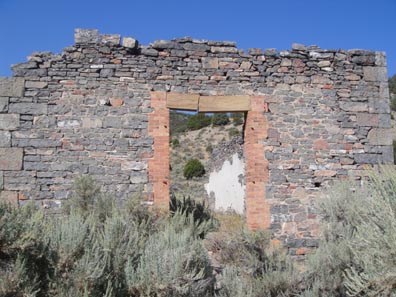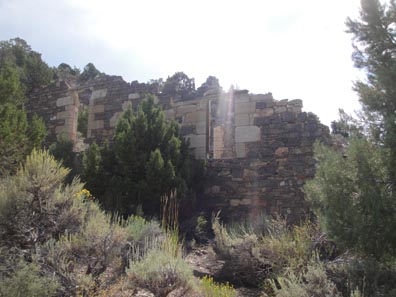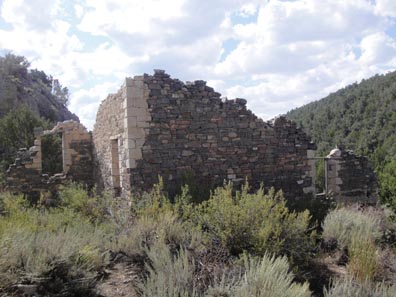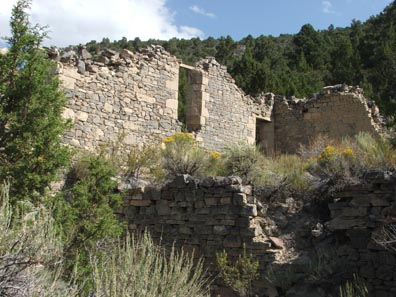![]()

Sherman Town has many Buildings
Few can be seen

This was once a large Building

Was this a Hotel?
Originally established in 1868 as Silver Springs, Sherman Town was renamed for General William Tecumseh Sherman in 1869. This town had adequate water and timber to build stamp mills so it became the center for processing ore in the district. The town had a sawmill, a quartz mill, and a smelting furnace. By the end of the year, two sawmills were producing lumber to keep up with the campís wood demand. There was also a two-story, sixteen room hospital and two law firms. A telegraph line was completed to Shermantown and the Silver Springs Water Company channeled water to the camp via a 900-foot tunnel. The population of Shermantown was estimated to be as many as 3,000. Liquor was readily available in the 12 restaurants, 11 saloons and 9 lodging houses. Recreation consisted of 2 theaters, 2 ice-cream parlors and a nearby horse racing track. A three-story building was used for Masonic and Odd Fellow meetings. The first school was a private school at the head of Main Street. A public school was built a few months later. There were 3 assay offices, 4 livery stables and 2 stage lines connected with nearby Hamilton. Only low-grade silver ore was available in the area and the costs to mine it
exceeded its worth so the town quickly dwindled away. By 1875, only one mining man and his family remained in Shermantown. Many of the commercial buildings were torn down and used to rebuild Hamilton after the fires in 1872 and 1873. No mention of churches or a cemetery is found in the newspapers of the day. Stone mill ruins and walls can be seen. Camping is not recommended in the area due to lack of wood.

There were several large Buildings here

This Building was two stories tall